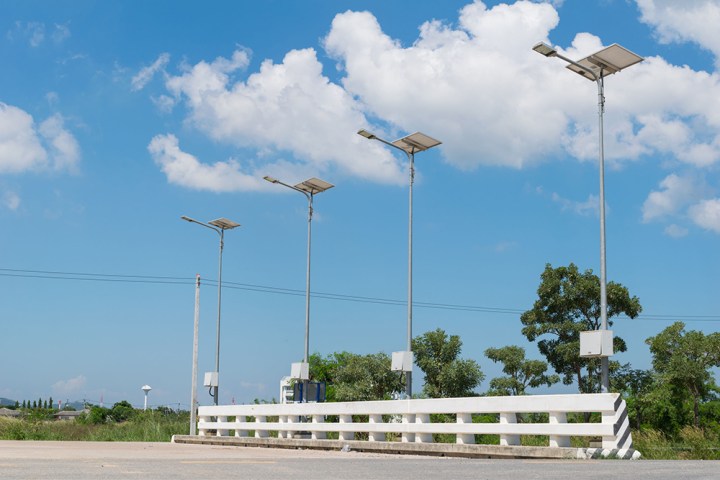
The problem with the current generation of LED lights is their bluish hue. Indoor LEDs are manufactured with a layer of phosphor that absorbs the blue light and re-emits the light with a hue that is pleasing to the eye. The relative shade of blue depends on the LED being used and the amount of phosphor inside the bulb. To maximize efficiency, the outdoors lights maintain a low color temperature of 4,500 to 6,500 K, giving the LED lights their bluish tinge. These blue LEDs are the cheapest LEDs to manufacture and operate. They also are brighter than their incandescent counterparts.
The cost savings of the blue-light LEDs is significant. It is estimated that street-level lighting by municipalities accounts for 30 percent of all the energy used to generate electricity for outdoor lighting, while another 60 percent of outdoor lighting costs goes toward lighting parking lots and garages. Cities that are making the changeover to LED lighting are reaping the benefits. Los Angeles, for example, installed 150,000 LED streetlights with an anticipated goal of saving $8 million a year in lighting costs, while New York City hopes to recoup $14 million a year through its conversion of 250,000 streetlights to LEDs.
Related: Philips SceneSwitch LED bulbs make mood lighting easier than ever
This LED light may help the bottom line, but among the chief concerns with LED lights is their effect on the human sleep cycle. The wavelength of blue emitted by these efficient bulbs has been shown to adversely affect the production of melatonin. This reduction in melatonin can then impact a person’s natural circadian rhythm which eventually leads to poor sleep quality, excessive tiredness, and obesity. Studies suggest the negative effect of LEDs on sleep is five times greater than that of conventional streetlights.
These detrimental effects also are seen in nocturnal animals such as bats and certain species of birds and insects, which require a dark environment at night to thrive. A high-profile example is the sea turtle, which is attracted to the LED lights used at coastal resorts. Instead of scrambling to the safety of the ocean after birth, small sea turtles are often found wandering to the blue light emitted by hotel parking lights, The effect of blue light is so pronounced in humans and other animals that both the AMA and the U.S. National Park Service are recommending shielding and other precautionary practices that limit the exposure to this form of light.




